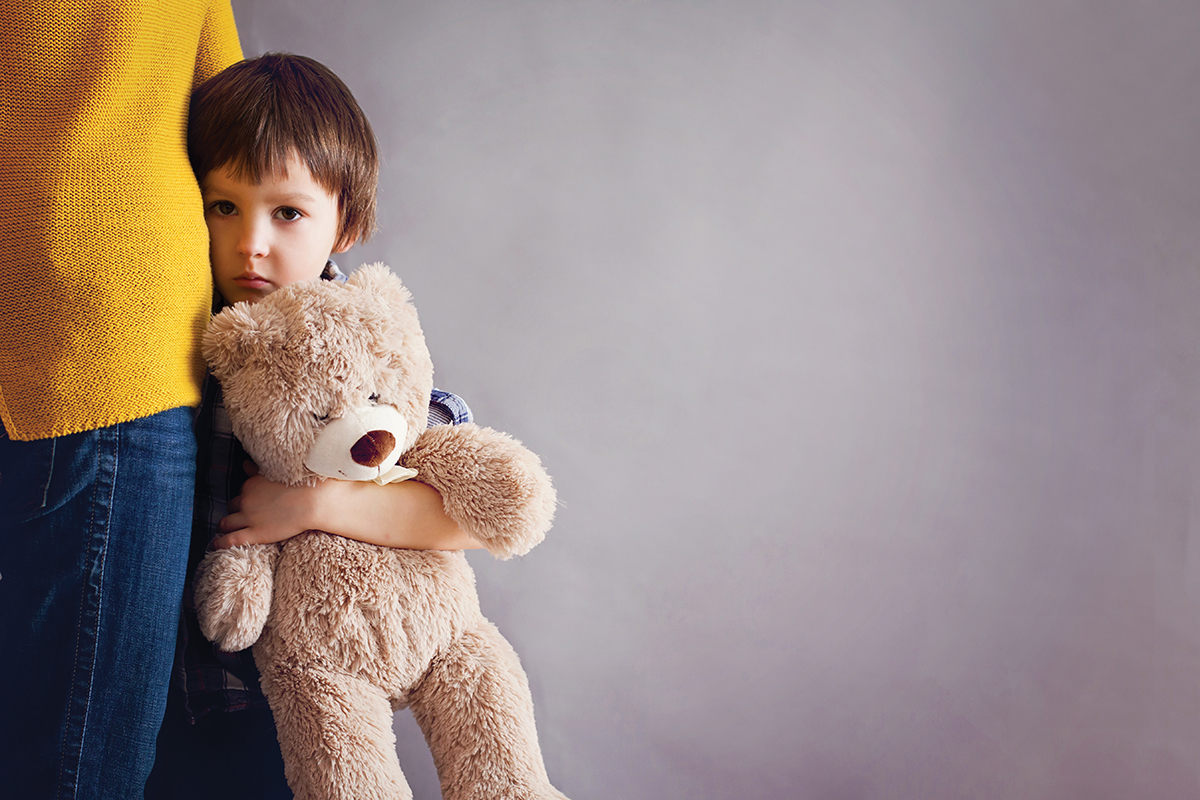Noah was her easy child, a boy so perpetually happy his mother would call him her “ray of sunshine.”
“When people asked him ‘How are you?’ he would answer, ‘Great!’ He was always so enthusiastic,” says Julie, who requested that their real names not be used.
You may unsubscribe from any of our newsletters at any time.
After the challenges of parenting her two older sons who had special needs, raising Noah was a breeze. Julie home-schooled all three of her sons, and when she noticed that Noah had problems sitting still, she simply created a learning environment where he could be on the move.
The problems began in Grade 5 when Noah entered the public school system. He found the more structured environment a bit of a challenge, but the bigger problem was the teacher, who would hand out detentions to kids who didn’t read one book a week, and required the students to copy all of the notes from the blackboard. “We’re talking five huge blackboards full of written information,” says Julie. “The teacher would finish on the chalkboard then walk around the classroom, yelling at kids who didn’t write quickly or neatly enough.”
As the weeks passed, Julie noticed Noah becoming more and more anxious. One day, he came home from school and told her his hand would shake so badly in class that he could barely hold his pencil. “This devastated [him] as he believed that he had both disappointed the teacher and failed at something he’d previously thought was a strength,” remembers Julie.
When school administrators didn’t address the problem to her satisfaction, Julie found an alternative school that was more supportive of her son’s needs. Much to her relief, Noah settled in and his appetite for learning returned.
Looking back, Julie realizes the early signs of an anxiety disorder were present in Noah but that she downplayed them. She’s plagued with guilt for not catching it sooner. “His brothers had real challenges, and I always thought life would be easy for him,” she says. “I so wanted that to be true.”
Anxiety disorders are the most common mental health problem among children and youth today, affecting an estimated six percent of them. The disorders most commonly affecting children include separation anxiety, social phobia and selective mutism. Some experts also include obsessive-compulsive disorder, panic disorder and post-traumatic stress disorder. Approximately 22 percent of people will be affected by an anxiety disorder in their lifetime.
Feeling anxious is a natural reaction to stress, and the children who experience butterfly flutters in their stomach before a test are responding normally. If children are unable to breath or become so dizzy they can’t stand up, they likely need help.
When caught in the early stages, anxiety can be easy to treat effectively. Most children respond well to cognitive behaviour therapy, an evidence-based counselling program that helps make patients more aware of their reaction to stress and teaches them to change their response.
But parents sometimes overlook the signs until the disorder becomes severe, says psychologist Dr. Susan Williams. Often, by the time she sees children, they’re experiencing feelings of anger and sadness, they’re having difficulty sleeping and their grades have dropped.
Williams is director of the Halton Centre for Cognitive Therapy and Stress Reduction in Oakville, Ont., and frequently gives presentations to parents and educators on anxiety in children and youth. When she started giving talks about 10 years ago, a typical crowd consisted of about 200 parents. More recently, she found herself staring out at a room packed with more than 600 parents.
“Kids are under more stress today,” she says. “High school students are especially under stress as they know there’s more competition to get into programs. They’re feeling the pressure, and they know there are fewer jobs.”
‘Society rewards perfectionists and high-achieving people who have everything in its place.’
One of the reasons for the increase, says Williams, is because in today’s highly competitive world, some of the very traits associated with an anxiety disorder are being encouraged. “It can go undetected because society rewards perfectionists and high-achieving people who have everything in its place,” she says. “So when your child has a perfectly tidy room all the time and she spends triple time on her studies so she doesn’t make mistakes, parents will say she’s doing okay. Really, though, the child is constantly worried about not being good enough. She’s worried about the future, so she’s doing all that studying and not seeing her friends.”
Parents also tend to downplay the symptoms of anxiety with that simple phrase: “It’s just a stage.” That’s something she hears a lot from the moms and dads of teens. “There’s a belief that when a child goes into high school, grades will drop, that this is normal — but it’s not,” she says.
Dr. Katy Kamkar, from the Centre for Addiction and Mental Health in Toronto, says it’s critical to get help early. “Seventy percent of mental health problems have their onset in childhood,” says Kamkar, a clinical psychologist in the centre’s psychological trauma program. Without treatment, some anxiety disorders that begin in childhood can last a lifetime, she says. This is why she stresses the importance of awareness and normalizing mental illness.
“We need to focus more on mental health and early intervention so people come forward sooner,” she says.
It’s not only due to lack of insight that parents aren’t getting their child help but also because of a lack of access to treatment. That’s why the Mental Health Commission of Canada recommended that anxiety prevention programs be offered in school, where kids spend about six hours of their day.
In 2004, British Columbia became the first province in Canada to offer an anxiety prevention program for all elementary students. The 10- to 12-week program, called FRIENDS, teaches students the tools to recognize when they’re feeling stressed and the skills to identify the thoughts and beliefs that can lead to negative feelings. It is delivered in three program levels: kindergarten and Grade 1, Grades 4 and 5, and Grades 6 and 7.
Many school boards, including the Hamilton-Wentworth District School Board, have followed suit and implemented similar programs. However, it appears unlikely that the programs will be widely adopted elsewhere. According to a 2013 report by the Mental Health Commission, “School boards in Canada do not yet have the organizational conditions in place to deliver coordinated, evidence-based strategies across the continuum of care.”
So if schools aren’t there to help our kids, what about community services and programs? A report earlier this year by Children’s Mental Health Ontario showed that over 6,500 children and teens were waiting more than one year to access mental health services. Because of that long wait, more kids and youth are ending up in the hospital. Over the last decade, there’s been a 54 percent increase in emergency department visits in Ontario and a 60 percent increase in hospitalizations for children and youth seeking treatment for mental health issues.
Even when kids get into treatment, some parents aren’t able to follow through. While working as a clinical psychologist at the Children’s Hospital of Eastern Ontario in Ottawa, Dr. Pat McGrath noticed that many parents — up to 60 percent — stopped bringing their child to treatment programs before they were completed. He wondered why.
“I originally thought parents weren’t motivated, but when I really looked at it, I discovered there are a lot of good reasons they had stopped in terms of time and money,” says McGrath, now a Canada Research Chair and a professor of psychology, pediatrics and psychiatry at Dalhousie University in Halifax. “If you have to take 10 Wednesday afternoons off and drive across town, that can be challenging. Then there’s the cost of parking and maybe buying a meal and paying for babysitting. You’re beginning to get into a lot of costs and a lot of difficulties.”
After years of research, McGrath and a team developed the Strongest Families Institute in Halifax, which provides a distance education program designed on the premise that mental health services should be built around the needs of the family.
The program, called Chase Worries Away, allows the parents of six- to 17-year-olds to connect by phone with trained coaches, who offer advice and emotional support at a time convenient for the parent. It has been running for about nine years and has a 92 percent completion rate.
“We make it very family oriented. We don’t tell them they have to have their appointments between 9 a.m. and 5 p.m. because that’s when they work,” says McGrath.
For some families, however, getting help isn’t about lack of services. For Rachel, it was about getting her husband on side when their twin boys, Sam and Jack (all names changed), began showing signs of anxiety disorders at around age 10. Sam became so obsessed with handwashing that his skin became red and flaky; Jack worried excessively about getting sick and about his parents separating.
Rachel educated herself on mental health issues and advocated fiercely for services in their school. However, without the support of her husband, her work was often derailed. When she tried to set up counselling for her boys, he wouldn’t show up to drive them. He also had anger issues, which he refused to acknowledge.
“Whenever Sam got into trouble at school and got sent to the principal’s office, his dad would get so angry that Sam would be monumentally afraid of him,” says Rachel, who lives in Oakville. “That isn’t how you help a kid with an anxiety disorder.”
Rachel eventually had a major breakdown and then separated from her husband. But she still feels guilty that she didn’t leave sooner. Conflict with their sons was the central issue in the marriage. “It wasn’t until after we split up, when the damage had already been done, that he came around to getting help with his own anger issues,” says Rachel.
Her sons are now in their mid-30s and doing well. Both are married with good jobs. They’re on the same anti-anxiety medication that they started on as boys, and will be for some time. As Rachel says, “They both know it’s not going to go away and that it needs to be managed.”
Rachel’s situation speaks to an important and often overlooked aspect of anxiety disorders: creating a stress-free home environment for children is critical. All children need healthy nutrition, a sense of routine and social supports — along with people who love and support them unconditionally.
Maintaining that in today’s fast-paced world where both parents work isn’t always easy. Parents need to look at the environmental factors that may be contributing to stress in their daily lives, says Kamkar. “If parents have a long commute, or their financial situation changes, the entire family is impacted. Any stress the family goes through will have an impact on everyone they live with, especially their children.”
That is particularly true if you’re living in poverty. According to a 2008 McMaster University study, children who are surrounded by the toxic stressors of poverty — the constant worry over finances, parents juggling two jobs — are three times more likely than children from non-impoverished homes to develop a mental health problem.
The study, by Dr. Ellen Lipman and Michael Boyle, showed that the longer a family lives in poverty, the more severe the mental health disadvantages of the children. So with all of these factors — whether it’s time poverty or financial poverty — working against families today, how do parents create a stress-free home environment?
Start with baby steps, says McGrath. Get your children outside playing more, and have more family dinners together. Sometimes, it’s as simple as turning off the TV and other screens. “Kids are listening to the news when we are, and they’re taking it all in, but they lack the social skills and emotional maturity to deal with it,” says McGrath.
Adds Susan Williams: “Kids are getting phones at age 12, and we’re not living in the moment as much. . . . We’re just constantly jumping from text to text, and there’s this constant barrage of information. The content of some of that information is much more significant and distressing than it used to be. Just think of someone poking you. When does the physiology of your body get to recover?”
Parents must become more aware of how they manage stress, because they are the main role models for their child.
Williams suggests indulging in a little downtime with your kids. “So many parents are busy or distracted. . . . I tell them to get into their child’s world for 10 minutes.” She adds that parents must become more aware of how they manage stress, because they are the main role models for their child. Studies show a child has a much higher chance of developing an anxiety disorder if one or both parents are anxious. “Kids learn how to deal with their anxiety by observing their parents. Unfortunately, a lot of parents don’t know how to calm themselves down, so they can’t calm their kids down,” says Williams. She adds that it’s also important to let our children know it’s not a sign of weakness to ask for help.
What Julie learned from parenting a child with an anxiety disorder is that, like nearly all mental health problems, it is for life. Getting a child diagnosed early is critical to preventing the anxiety from becoming overblown. It also allows the parents to access support for their child and to help the child manage symptoms, especially during periods of stress.
Noah did well at his new alternative school program. But when he reached high school, the symptoms returned and intensified until he was completely paralyzed. “He felt backed into a corner and was so overwhelmed that he was practically unable to function,” says Julie.
One day he came home from high school and crawled into his bedroom closet and slept there, hiding from the world. “It was heartbreaking,” says Julie. “I was so afraid he would hurt himself. In fact, there was a rope in his closet, and one day — sobbing — I went in and removed it.”
With more counselling and lots of unconditional love and support, Noah found his way out of the dark. But the take-away lesson for Julie was that he will always have an anxiety disorder. “Every day, I ask him to take care of himself. Just yesterday, I texted him a reminder that his current circumstances are potentially dangerous for him and that he needs to be mindful of getting lots of sleep, eating well and talking to us about his mental health and how he’s feeling. It will need to be managed just like diabetes or any other health challenge. Like any parent of any child, my hope is that he can achieve and maintain wellness so that he can enjoy the life he wants to live.”
This story first appeared in The Observer’s January 2017 issue with the title “Little bundles of nerves.”














